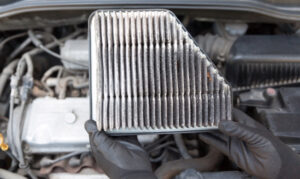Introduction
Welcome to this blog post on fuel filter problems, symptoms, and solutions. In this post, we will be discussing the importance of fuel filters in your vehicle, common symptoms of a clogged fuel filter, and step-by-step instructions on how to replace it. By the end of this post, you will have a clear understanding of how to maintain and replace your fuel filter, keeping your vehicle running smoothly.
Importance of Fuel Filters
A fuel filter is an essential component of your vehicle’s fuel system. Its main function is to remove impurities, such as dirt and debris, from the fuel before it reaches the engine. This helps to ensure that the fuel is clean and free of contaminants, which can cause damage to your engine and decrease your vehicle’s performance.
Symptoms of a Clogged Fuel Filter
A clogged fuel filter can cause a variety of problems for your vehicle. Some common symptoms of a clogged fuel filter include:
- Reduced engine performance
- Hard starting
- Stalling
- Poor fuel economy
- Misfiring
If you notice any of these symptoms, it’s important to check your fuel filter and see if it needs to be replaced.
Step-by-Step Instructions on Replacing a Fuel Filter
Before you begin, it’s important to gather all the necessary tools and materials. You will need:
- A new fuel filter
- A socket wrench
- A pair of pliers
- A catch container
Step 1: Locate the fuel filter. It’s usually located near the fuel tank or engine.
Step 2: Use the socket wrench to loosen the fuel line connections on either side of the fuel filter. Use pliers to remove the fuel lines from the filter.
Step 3: Place the catch container underneath the fuel filter to catch any remaining fuel that may come out.
Step 4: Remove the old fuel filter and discard it properly.
Step 5: Install the new fuel filter. Make sure the fuel lines are properly connected and tightened.
Step 6: Start the engine and check for any leaks.
Precautions:
- Always work on a cool engine and make sure the vehicle is in park or neutral and the emergency brake is on.
- Always wear gloves and safety glasses when working with fuel.
- Never smoke or have an open flame near fuel.
- Always dispose of used fuel filters properly.
- Always refer to the vehicle’s owner’s manual for specific instructions and precautions.
Conclusion
Maintaining and replacing your fuel filter is an important part of keeping your vehicle running smoothly. By understanding the symptoms of a clogged fuel filter and following the step-by-step instructions provided in this post, you can easily replace your fuel filter and keep your vehicle running at its best. If you have any questions or concerns, always refer to your vehicle’s owner’s manual or consult with a professional mechanic. Thanks for reading!










